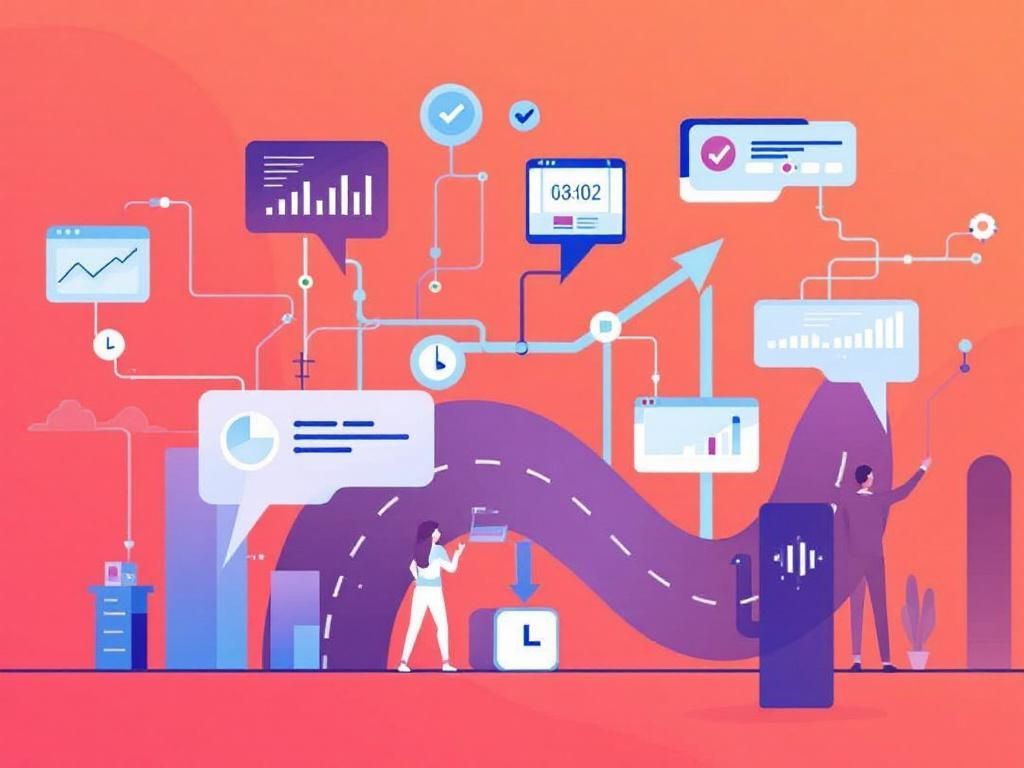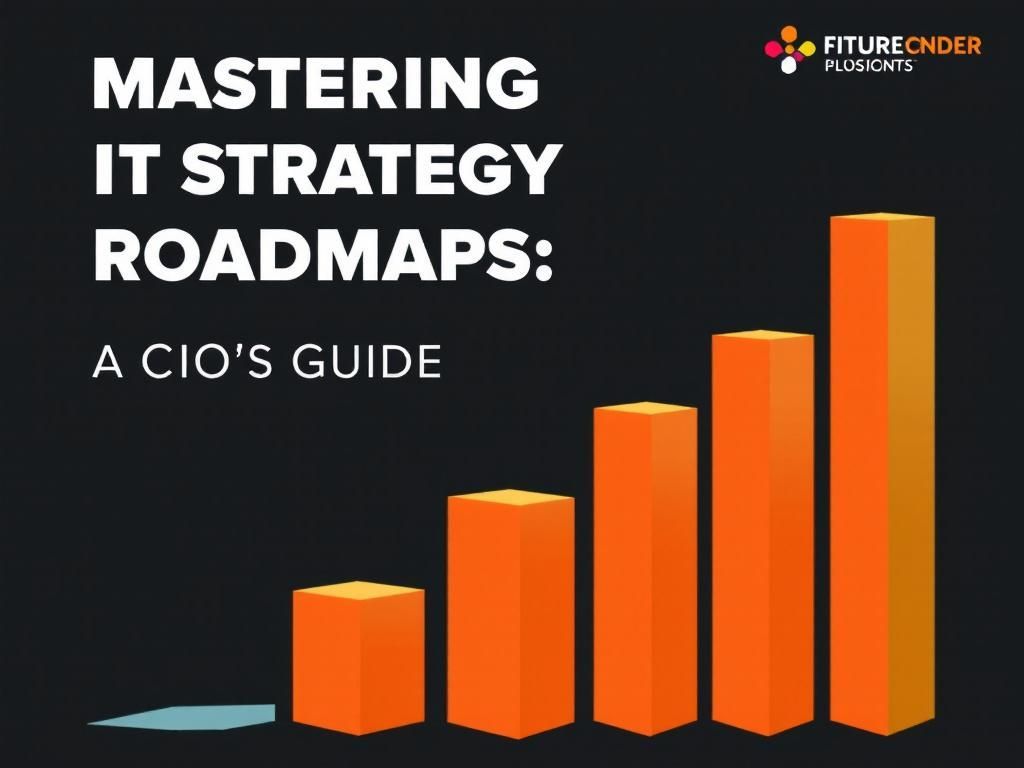Mastering IT Strategy Roadmaps for CIOs in 2025
Explore essential strategies for CIOs to develop effective IT roadmaps in 2025, ensuring alignment with business goals and technology advancements.

As we look toward 2025, the rapidly evolving technological landscape presents both challenges and opportunities for Chief Information Officers (CIOs). The need for effective IT strategy roadmaps has never been more crucial. These roadmaps not only align IT with business objectives but also enable organizations to navigate the complexities of digital transformation, emerging technologies, and cybersecurity threats. This article delves into the key components of mastering IT strategy roadmaps in the coming years, providing insights and actionable strategies for CIOs.
Table of Contents
The Importance of IT Strategy Roadmaps
An IT strategy roadmap serves as a strategic guide that outlines an organization’s technological direction and initiatives over a specified timeframe. It is essential for several reasons:
- Alignment with Business Goals: Ensures that IT initiatives directly support the overarching business objectives.
- Resource Allocation: Facilitates informed decision-making regarding budget and resource distribution.
- Risk Management: Identifies potential risks and mitigation strategies early in the planning process.
- Performance Measurement: Establishes clear metrics to evaluate the success of IT initiatives.
Key Components of an Effective IT Strategy Roadmap
To create a robust IT strategy roadmap, CIOs must consider several critical components:
1. Current State Assessment
Understanding the present IT landscape is fundamental. This involves:
- Performing a SWOT analysis (Strengths, Weaknesses, Opportunities, Threats).
- Evaluating existing IT infrastructure, applications, and processes.
- Gathering input from stakeholders across the organization.
2. Vision and Goals
Defining a clear vision for IT is vital. This should align with the organization’s mission and values. Consider the following:
- Establish short-term (1-2 years) and long-term (3-5 years) goals.
- Involve key stakeholders in the goal-setting process.
- Ensure goals are measurable and time-bound.
3. Roadmap Development
Once the current state and goals are defined, the next step is to develop the roadmap:
- Identify Key Initiatives: Determine which projects will help achieve strategic goals.
- Set Priorities: Rank initiatives based on impact, feasibility, and urgency.
- Define Milestones: Establish clear milestones to track progress.
4. Resource Planning
Effective resource planning is critical for successful implementation:
- Assess the skills and capabilities of the IT team.
- Identify any skill gaps that need to be addressed through hiring or training.
- Determine budgetary requirements for each initiative.
5. Stakeholder Communication
Regular communication with stakeholders is essential for transparency and buy-in. Consider the following:
- Schedule regular updates and meetings.
- Use dashboards and reports to visualize progress.
- Gather feedback and adjust the roadmap as necessary.
Adapting to Emerging Technologies
The technological landscape is constantly changing. Here are some trends that CIOs should consider integrating into their IT strategy roadmaps for 2025:
1. Cloud Computing
Cloud technologies continue to revolutionize how organizations operate:
| Benefit | Description |
|---|---|
| Scalability | Easily scale resources up or down based on demand. |
| Cost Efficiency | Reduce IT costs by moving to a pay-as-you-go model. |
| Accessibility | Access data and applications from anywhere, enhancing remote work capabilities. |
2. Artificial Intelligence and Machine Learning
AI and ML can optimize operations and enhance decision-making:
- Automate repetitive tasks.
- Provide predictive analytics for better forecasting.
- Enhance customer experiences through personalization.
3. Cybersecurity
As cyber threats become more sophisticated, CIOs must prioritize cybersecurity:
- Implement a Zero Trust Model: Assume that threats exist both inside and outside the network.
- Regular Security Audits: Conduct frequent assessments to identify vulnerabilities.
- Employee Training: Train staff to recognize and respond to cyber threats.
Measuring Success
To ensure the effectiveness of an IT strategy roadmap, CIOs must establish key performance indicators (KPIs). Some KPIs to consider include:
- Project Completion Rates: Track the percentage of projects completed on time and within budget.
- Return on Investment (ROI): Measure the financial return of IT initiatives.
- Stakeholder Satisfaction: Gather feedback from key stakeholders to assess satisfaction levels.
Continuous Improvement
Finally, the IT landscape is dynamic, and continuous improvement should be part of any roadmap. CIOs can foster a culture of agility by:
- Encouraging innovation and experimentation.
- Regularly reviewing and updating the roadmap based on performance and feedback.
- Staying informed about industry trends and emerging technologies.
Conclusion
Mastering IT strategy roadmaps in 2025 requires a proactive approach that emphasizes alignment with business objectives, adaptability to emerging technologies, and continuous improvement. By focusing on these key components, CIOs can navigate the complexities of the digital landscape and drive their organizations toward success. As the role of IT becomes increasingly strategic, the ability to craft and execute a clear roadmap will be a hallmark of effective CIO leadership.
FAQ
What is an IT strategy roadmap?
An IT strategy roadmap is a strategic plan that outlines an organization’s technology goals and the steps needed to achieve them, aligning IT initiatives with business objectives.
Why is an IT strategy roadmap important for CIOs in 2025?
In 2025, CIOs must navigate complex technological landscapes, making a clear IT strategy roadmap essential for aligning resources, managing risks, and driving innovation.
How can CIOs effectively create an IT strategy roadmap?
CIOs can create an effective IT strategy roadmap by conducting a thorough assessment of current technologies, engaging stakeholders, and prioritizing initiatives based on business impact.
What key trends should CIOs consider for their IT strategy roadmap in 2025?
CIOs should consider trends such as artificial intelligence, cloud computing, cybersecurity, and remote work solutions while developing their IT strategy roadmap for 2025.
How often should CIOs update their IT strategy roadmap?
CIOs should regularly review and update their IT strategy roadmap, ideally on an annual basis, to adapt to changing technologies and business priorities.
What role does stakeholder engagement play in IT strategy roadmaps?
Stakeholder engagement is crucial in IT strategy roadmaps as it ensures alignment with business goals, facilitates resource allocation, and enhances buy-in for technology initiatives.






